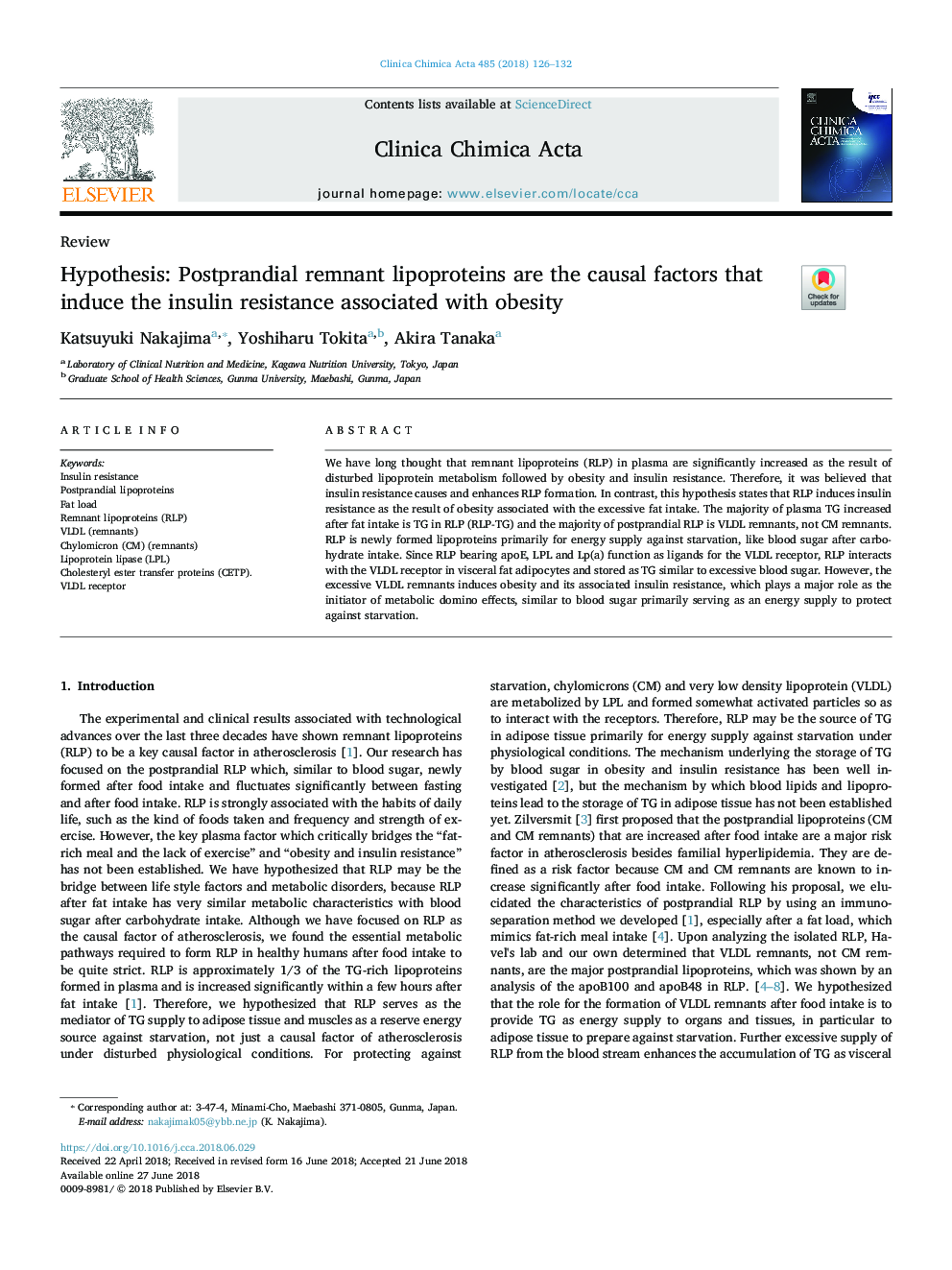| Article ID | Journal | Published Year | Pages | File Type |
|---|---|---|---|---|
| 8309382 | Clinica Chimica Acta | 2018 | 7 Pages |
Abstract
We have long thought that remnant lipoproteins (RLP) in plasma are significantly increased as the result of disturbed lipoprotein metabolism followed by obesity and insulin resistance. Therefore, it was believed that insulin resistance causes and enhances RLP formation. In contrast, this hypothesis states that RLP induces insulin resistance as the result of obesity associated with the excessive fat intake. The majority of plasma TG increased after fat intake is TG in RLP (RLP-TG) and the majority of postprandial RLP is VLDL remnants, not CM remnants. RLP is newly formed lipoproteins primarily for energy supply against starvation, like blood sugar after carbohydrate intake. Since RLP bearing apoE, LPL and Lp(a) function as ligands for the VLDL receptor, RLP interacts with the VLDL receptor in visceral fat adipocytes and stored as TG similar to excessive blood sugar. However, the excessive VLDL remnants induces obesity and its associated insulin resistance, which plays a major role as the initiator of metabolic domino effects, similar to blood sugar primarily serving as an energy supply to protect against starvation.
Keywords
Related Topics
Life Sciences
Biochemistry, Genetics and Molecular Biology
Biochemistry
Authors
Katsuyuki Nakajima, Yoshiharu Tokita, Akira Tanaka,
